This rifle has been a long time coming. I
first expected the 6.5 Creedmoor Mark II to arrive in time for
me to take it out for some long-range shooting back in June at
the NRA Whittington Center
near Raton, New Mexico, but it did not arrive in time. That is
just as well, because the ammunition did not arrive either. The
rifle finally arrived a couple of months ago, but I have been
awaiting the arrival of ammo and dies. Finally, the ammunition
arrived from Hornady, and I was able to get down to shooting.
Not the long-range shooting that I had wanted to do, but I did
get in quite a bit of bench time on my own range with Ruger’s
Mark II Creedmoor.
The 6.5mm Creedmoor was developed to give
target shooters a 6.5mm cartridge that could use those
wonderfully-long .264 diameter bullets in a cartridge that did
not exceed the overall loaded length of the .308 Winchester
cartridge. This allows the six-five to function through .308
length bolt action and semi-auto rifles. The Creedmoor case is
shorter than the .308, reducing powder capacity when compared to
the .308-based .260 Remington cartridge, but allowing those long
bullets to be seated without intruding upon the powder space
within the cartridge. The result is a cartridge that is
well-suited for long-range target shooting, yet has relatively
mild recoil, and operates at moderate peak pressure.
The Ruger Mark II wears a semi-heavy
twenty-eight inch stainless barrel that has a one-in-eight-inch
twist to stabilize those long 6.5mm bullets that fly so well.
The barreled action is free-floated into a target style
laminated wood stock. While built for easy handling from the
bench, the Mark II would also be well-suited for long-range
varmint and medium game hunting, and is thus equipped with sling
swivel studs for that purpose. The sling is also used in some
target positions, so the studs are a welcome feature. The
wide beavertail forend and straight-comb stock are excellent
features for a target rifle, and the laminated stock should
prove to be very stable.
The Mark II wears Ruger’s two-stage target
trigger, which is set at the factory for optimum performance.
However, the trigger on this test rifle was not nearly as light
nor as smooth as the same style of trigger that I recently
reviewed on the .308 Tactical
Hawkeye. The trigger pull of this Creedmoor needed almost
four pounds of pressure to release, while the Hawkeye Tactical
released crisply at barely over two and one-half pounds. The
trigger on the .308 was also much smoother. Despite Ruger’s
warning in the instruction manual to leave the trigger alone, I
did fiddle with the adjustment screws a bit in an effort to
improve the trigger pull, but it was returned to its factory
settings, as I could not lighten the pull any. In use, the
trigger pull did smooth up appreciably after shooting a couple
of boxes of ammunition through the rifle. The bottom metal
is all stainless steel on this rifle. No plastic or aluminum
parts will be found. The magazine holds four cartridges, and the
floorplate releases easily by pushing in on the lever machined
into the front of the trigger guard.
For accuracy testing, I mounted the superb
Leupold VX-3L Long Range scope with their Varmint Hunter’s
reticle. This is an excellent scope, and mounts low to the
bore and still lets in plenty of light. The 56mm objective has a
dished-out section at the bottom to allow it to mount as low as
a scope with a 40mm objective bell. The reticle has a
design that allows for several hold points for various ranges,
and has windage leads built in as well. This scope is built upon
a 30mm tube, and I mounted it atop the Ruger’s integral scope
bases using Leupold 30mm Ruger compatible rings. With scope and
rings attached, the package weighs in at eleven pounds, nine
ounces, which is about two pounds heavier than just the bare
rifle.
With no loading dies available, I was limited
to using two factory Hornady loads, and they proved to be very
accurate, testing at limited range. I only had my one hundred
yard range available to me during testing, but the Mark II would
cloverleaf five rounds into tight clusters at that range. The
sample rifle displayed a preference for the 120 grain A-Max
loads, grouping them better than it would the 140 grain A-Max
ammunition. Recoil is mild, extraction easy, and the cartridge
cases were not even warm to the touch after firing. Hornady
holds the pressures to a moderate level, and they also list load
data on the box of ammunition. I clocked the speed of the
bullets at a distance of ten feet. Air temperatures hovered
around the fifty-five degree Fahrenheit mark, at an elevation of
approximately five hundred feet above sea level. The 140 grain
ammo clocked in at 2719 feet-per-second (fps), and the 120 grain
ammo clocked 2843 fps. These numbers are below what
Hornady lists for a twenty-eight inch barrel, and the velocity
can be increased, but the goal should be for decent velocities
with good accuracy. There is no need to try to push it. We have
the .264 Winchester Magnum for that. The velocity of the 6.5mm
Creedmoor is plenty to assure long-range performance, and still
give excellent barrel life. I dearly love the performance of my 6.5mm
Grendel, and the Creedmoor exceeds the performance of the
Grendel handily. Those long, slender bullets glide through
the air effortlessly, and the performance really pays off at
extended ranges. The Mark II is a target rifle that is
competitive, right out of the box. Bolt on a good scope, buy
some Hornady ammo, and it is ready to go.
I am not a benchrest shooter, and am
therefore not qualified to claim any expertise on the subject,
but I do know that this Ruger Mark II 6.5mm Creedmoor is set up
properly to deliver long range performance. It is very easy to
shoot well from a bench with this rifle. Aside from its target
shooting abilities, the Mark II is still handy enough to use for
hunting from an elevated stand. I would not want to wag it
through dense brush, but from a fixed position, it would serve
well for what is commonly called a “beanfield rifle”. That
term refers to an accurate rifle built for long-range hunting of
whitetail deer from an elevated platform. In this type of
hunting, the shots are long, and the rifle must be accurate to
assure a clean kill. There are many good 6.5mm hunting bullets
on the market, such as the Hornady SST and the Nosler Ballistic
Tip that are ideal for use on Southern whitetail deer. Just as I
am finishing up this review, the Hornady 6.5mm Creedmoor dies
are now shipping, so handloading target or hunting bullets for
this cartridge is now an option.
The Ruger Mark II Target Rifle is an
accurate, reliable, and easy to shoot rifle. It is built to
deliver at the target range, and doubles as a good hunting rifle
for limited applications. Like all Ruger firearms, it is built
from quality materials, is affordable, and built in the USA. Check out the full line of Ruger products
here.
For the location of a Ruger dealer near you,
click on the DEALER FINDER at www.lipseys.com.
To order the Mark II online, go to www.galleryofguns.com.
To order the excellent Hornady ammunition,
bullets, and dies, go to www.hornady.com.
For a closer look at high quality
American-made optics, go to www.leupold.com.
Jeff
Quinn
| For a list of dealers where you can
buy this gun, go to: |
|
To buy this gun online, go to: |
 |
|
 |
|
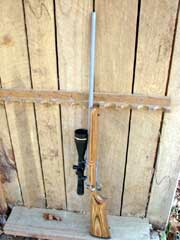
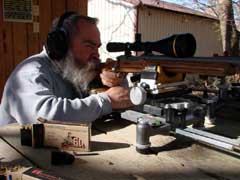
Jeff was favorably impressed by the performance
and accuracy of the Ruger M77 Mark II 6.5 Creedmoor
target rifle.
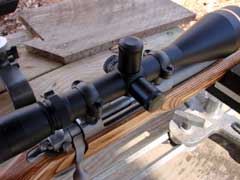
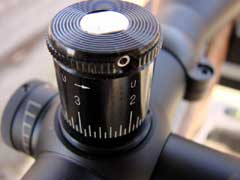
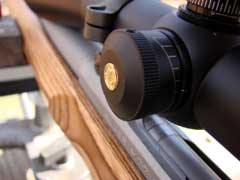
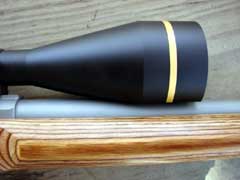
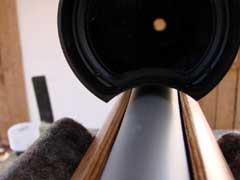
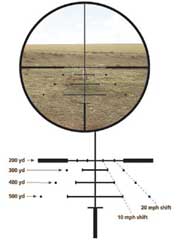
Leupold's VX-L target / varmint scope.
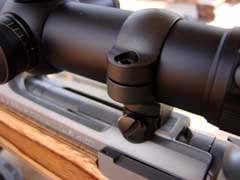
Scope was mounted using Leupold 30mm
Ruger-style rings.
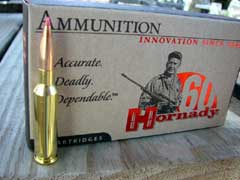
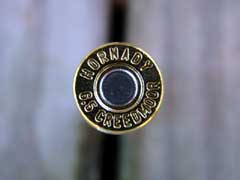
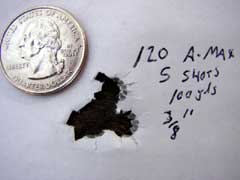
Hornady factory ammo proved to be very accurate
in the Ruger.
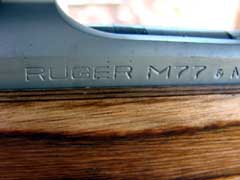
|



Got something to say about this article?
Want to agree (or disagree) with it? Click the following link to
go to the GUNBlast Feedback Page.
![]()
![]()